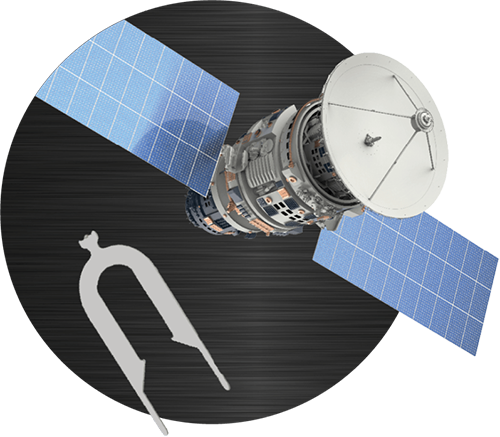This website uses cookies so that we can provide you with the best user experience possible. Cookie information is stored in your browser and performs functions such as recognising you when you return to our website and helping our team to understand which sections of the website you find most interesting and useful.
Using Chemical Etching to Fabricate the Most Intricate Satellite Components
According to an article featured in the HUSTLE, “satellites are set to grow by 1,000%+ over the next decade” as rocket launches continue to get cheaper, satellites continue to get smaller, and data analysis software becomes more advanced.
It is estimated that 50,000 high-tech devices will be orbiting the planet by 2030. This would not be possible without advancements in manufacturing processes and data analytics software.
This article highlights some of the applications for satellites and the materials used to create them. It also explains how photochemical etching can fabricate precision metal components with complex geometries without negatively affecting the metal’s integrity or compromising the performance of the part.
The etching process is great for fabricating thinner materials, which is essential for reducing the weight of the overall satellite structure.

Applications and Materials for Satellite Components
A catalyst behind the satellite expansion is growing communication services, which account for approximately 61% of active commercial satellites. A generous portion of this sector will be focused on satellite internet services to answer the increased global demand for higher-speed internet that will advance:
- Digitization of shops, workspaces, and social lives
- Autonomous vehicles; connected homes and factories; and robotics
From weather forecasting to broadcasting live events to our televisions and mobile devices, satellites require high precision parts made from aerospace grade materials including:
- Aluminum
- Titanium
- Copper alloys such as brass and beryllium copper
- Stainless Steel
- Nickel
These materials offer high electrical and thermal conductivity, durability, corrosion resistance, and ductility necessary for the harsh elements in space, such as extreme temperatures, radiation, and space dust. They also do not expand or contract much with temperature fluctuations common in orbit.
In terms of weight, the denser a satellite, the more it costs to launch. One solution to reduce the overall weight is to build the satellite with lighter components while not compromising the function and overall performance.
Fotofab’s chemical etching process can resolve this particular challenge by etching components from sheets of metal ranging in thickness from 0.0005 of an inch (0.013 mm) up to 0.090 of an inch 2.286 mm) without negatively affecting the part’s functionality and overall performance. Etching creates thinner and tighter tolerance components compared to other processes like stamping. Thus, reducing overall costs during the launch sequence.
Photochemical Etching for Satellite Components
Satellites are comprised of a variety of components including, shields, antennas, transponders, waveguide slot arrays, and attenuators. As the parts continue to get smaller, processes like welding, punching, and riveting become more impracticable.
Photochemical etching can fabricate a variety of complex geometries and intricate designs from prototyping to full-scale production within a matter of days.
This subtractive, non-contact method etches every dimension simultaneously. It eliminates heat and stress distortion created with processes like laser cutting, stamping, and water jet cutting, maintaining the integrity of the metal throughout the production process. The metal’s properties are not affected, guaranteeing high, long-lasting performance from each component while the satellite is orbiting space.

